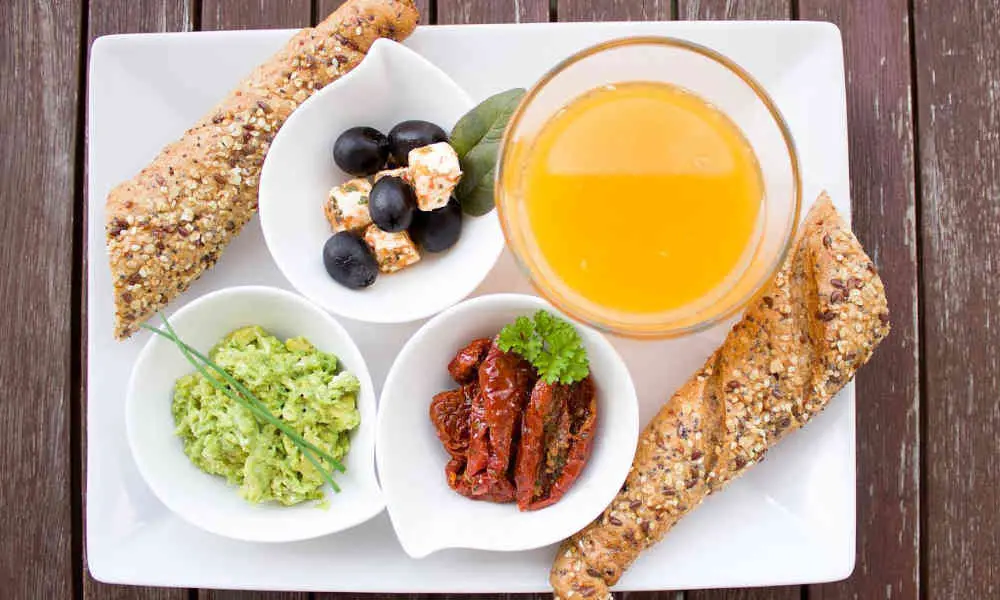What Are the Most Common Breakfast Foods Around the World?
Biscuits and gravy are the most common American breakfast food, but what about those in Poland or Russia? Is it possible to have oatmeal for breakfast as well? In this article, we’ll look at the most common dishes in both countries, as well as how they differ. You might also find it interesting to check out the various types of bread served at breakfast in other countries. And since we’re at it, why not make it easier for yourself by including some of these dishes in your own home?

Biscuits and gravy
Biscuits and gravy are a classic southern dish that can be enjoyed at any meal of the day. Smothering a freshly baked biscuit with piping hot sausage gravy will get you through the afternoon, but it’s perhaps the most common dish to be enjoyed for breakfast. The dish can be enhanced with bacon, which is typically fried and crispy with a sizzling sound.
The tradition of eating biscuits and gravy goes back centuries. It was a cheap, filling breakfast that could sustain plantation workers for an entire day. Today, it’s a favorite breakfast dish in the South and can often be found on the menu of diners. If you’re in the area, a local diner is your best bet. If you want to try this southern favorite, make sure to stop by a local diner.
Omelets
In modern times, the Omelet has become a worldwide phenomenon, and it has been adopted in almost every culture around the world. Romans had their own version of Omelet, while ancient Japanese and Persians also had their own version of this popular dish. Omelets are typically made with eggs with various fillings such as cheese, chives, and vegetables. Some people also include bacon or ham in their Omelets.
Unlike eggs, omelets are not as common in every country, and they can vary in texture, but they are commonly found everywhere. The French word “omelet” is actually derived from the medieval French word “amellet,” and it was first used in a cookbook in the late 17th century. During this time, it was known as “omelette,” but this word is not yet attested outside of southern France.
However, European omelettes are different from American omelets. European omelets are usually not runny eggs, and their texture is more creamy. This may be a factor in their superior quality. But the good news is that a European omelet isn’t as difficult to make as an American one. There are even recipes that are made from scratch. Whether you’re looking to make the simplest version or a gourmet masterpiece, you can be sure to find something that suits your needs.
While many cultures love omelets, the U.S., Canada, and France enjoy a full breakfast. However, they don’t have time for a full meal on weekdays. Instead, they substitute cornflakes or cereal. Meanwhile, French people save their croissants for Sunday and eat baguettes the rest of the week. So, whatever your taste preferences are, there’s no reason to give up on this delicious breakfast staple!
Oatmeal
While breakfast in the West is a time-honored tradition, it is often seen as a luxury in other parts of the world. In early America, meals were decided on regionally, according to the availability of crops and livestock, or even by what was leftover from the previous night. Today, however, breakfast is becoming more universal and common. This is partly due to the rise of American consumption and partly to upward mobility.
Oatmeal is an excellent whole-food breakfast. It provides the necessary energy and fills you up with complex carbohydrates. The benefits of oatmeal are numerous, but the most obvious is that it’s cheap and fits into many diets. It’s also gluten-free and can be adapted to suit a variety of diets. It has been shown to help people control diabetes and heart disease.
Oatmeal contains more protein than other grains. It also helps the body build muscle, keeps you feeling full longer, and is low-calorie. Oatmeal also helps you build muscles because of its slow-digesting nature. Half a cup of milk with oats contains three grams of protein. And if you’re a vegan or vegetarian, you’ll love the variety of flavors and textures that oatmeal has to offer.
Among the many benefits of oatmeal, its high fiber content makes it a great option for breakfast. Just a half cup of oatmeal contains four grams of fiber, which reduces your risk of heart disease, diabetes, and cancer. Plus, fiber also keeps your digestive system healthy and helps you poop regularly. Unfortunately, most people don’t eat enough fiber – you should aim for at least 25 grams a day, which is an impressive amount of fiber for a single day.
Congee
A traditional Chinese dish, congee is eaten in Asia as the main meal during breakfast, lunch, or dinner. It can be sweet or savory and can be made from day-old rice. Hence, it is often served as a staple in hospitals and health care facilities. In some regions, it is consumed only at breakfast, while in other areas, it is enjoyed at any time of day.
There are several varieties of congee around the world, ranging from rice flour to coconut milk. The sweet version is topped with dates and raisins. There are also variations made with mung beans. These variations are often referred to as kenda. Some people add coconut milk, kefir, or kiriya to sweeten it. Other people add treacle or kiriya to their congee.
A traditional Chinese breakfast usually includes a bowl of congee, a mild rice porridge, and a variety of toppings. In addition to congee, the region may serve xiaolongbao, which is pronounced sshyaoww-long-baoww-woo-baoww. In the United States, congee is served with a variety of savory and sweet toppings, including fried fish, peanuts, and eggs.
In Vietnam, rice congee is known as Chao. In addition to rice, it is also often topped with pandan leaves or Asian mung bean. In Thailand, this dish is commonly served as a breakfast staple and is eaten alongside rice or fried tofu.





